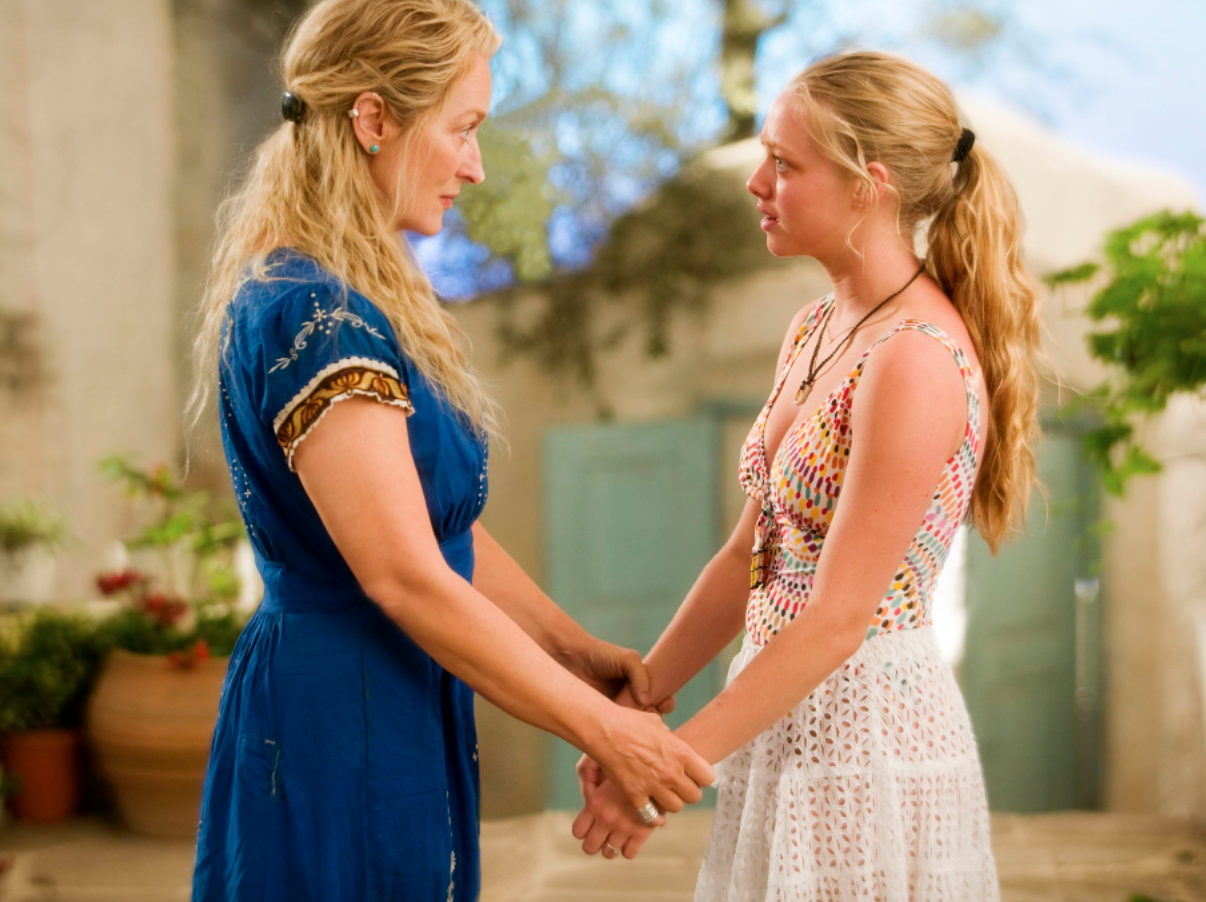The creators and producers of the musical, and later the film, wanted to stay as true as they possibly could to the music ABBA created: “When the stage version of Mamma Mia! was put together, the original ABBA backing track tapes were retrieved and the music on them faithfully transcribed, in order that the arrangements would be as close to the ABBA sound as it was” (Trzcinski 2020). Paired with the visuals and story of the show, the lyrics take on a new purpose. One of the main changes in the meanings of the songs in Mamma Mia! (2008) is that the movie discusses “single motherhood and aging female bodies within a culture that implicitly holds women increasingly responsible for providing pleasant domestic experiences and pleasing appearances within traditional patriarchal family structures.” (Graber 2015). The lead of the show is Donna, a woman over 40 who is raising her daughter Sophie on her own and isn’t sure which of the three men is the biological father.
Photo: Donna (Left) and Sophie (Right)
 (Universal Pictures 2008)
(Universal Pictures 2008)
Donna and her best friends, Tonya, and Rosie are working women, who are unafraid and unashamed of their feminist pasts and sexual desires (Graber 2015). Blend that with the freedom that 20-year-old Sophie has always known in a post-feminism world (bubble on Kalokairi) and is expressing in the days leading up to her wedding. What is born is a multigenerational story about womanhood, motherhood, and past relationships (Mamma Mia! 1999 and Mamma Mia! 2008).
